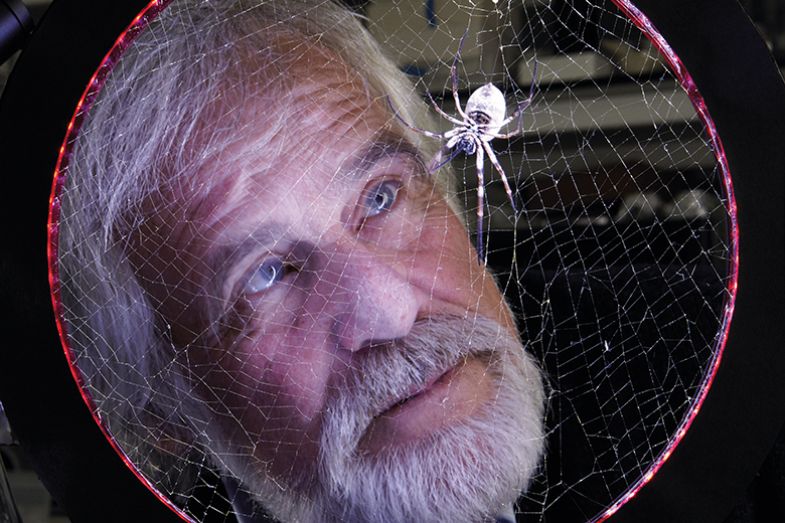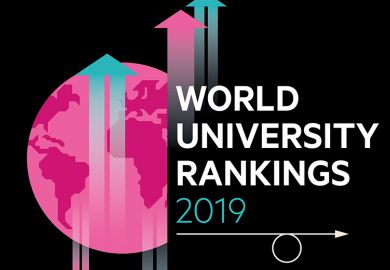Browse the full results of the World University Rankings 2019
For a university to excel in research, it needs to attract the best people and find ways to keep them, according to universities that make a strong showing in the Times Higher Education World University Rankings research pillar.
The University of Oxford remains the top research university in the world, while the University of Cambridge and Harvard University swap places to take second and third position, respectively. The California Institute of Technology and Stanford University retain fourth and fifth place, respectively. These five institutions continue to vie for the top positions.
A reputation survey, institutional research income and research productivity all inform the research pillar rankings. But at its heart it is about the people who perform research – the researchers themselves – and high-performing institutions are those that promote a research culture and nurture their academics.
Martha Crago, vice-principal for research and innovation at McGill University in Canada (ranked 47th in the research pillar), believes that her university’s research strength begins with a “good hire”. These are the people who universities are entrusting with their research reputation. “Whatever works in terms of research is due to the quality of people and the care with which people are sought out and attracted [to the university],” she says.
Attracting the best researchers often involves looking beyond a country’s borders. Many of the high-performing research institutions have a large proportion of international researchers, which they say is not a result of purposefully aiming to build a global roster but rather is a consequence of seeking the best researchers.
A high concentration of excellent researchers fosters a research culture, says William Bernhard, vice-provost for academic affairs at the US’ University of Illinois at Urbana-Champaign. “A rising tide lifts all boats. It creates an ethos where people are engaged in research excellence,” he says. His university ranks 38th in this year’s research pillar.
To promote this culture, Illinois at Urbana-Champaign offers researchers the opportunity to develop and grow their skills. This is necessary for both junior and senior staff members. Mentorship is a vital element in creating this culture, with senior researchers mentoring more junior staff and giving more junior academics the opportunity to take charge of projects. “At the end of the day, these investments pay off because when we hire a faculty member and say ‘here are the resources to help you succeed’, they feel valued and appreciated, and will work harder,” Bernhard says.
THE World University Rankings 2019: results announced
But a major impediment to research excellence is bureaucracy and confining administrative strictures. Universities with strong research cultures have found ways to help their academics circumvent these difficulties, allowing them to focus on research rather than on an administrative workload.
“We recognise the administrative, management burden that researchers have,” McGill’s Crago says. And while researchers are often unable to fund administrative positions or tasks through grants, the university has centralised administrative support functions to lighten this burden on researchers.
For the University of Michigan, which ranked 21st in research this year, it is important not only to attract the best researchers but also to give them the tools they need to perform their research and grow as academics. “We make sure our researchers have the tools they need to do their work, from significant laboratory and library facilities to museums, everything that is necessary to make this a place of knowledge and learning,” says James Holloway, vice-provost for global engagement and interdisciplinary academic affairs at the university.
The university also has a fund dedicated to retaining staff: if they get a better offer from another institution, whether in terms of salary or facilities, the university has resources set aside to try to keep them.

In terms of the research itself, a number of institutions attribute their research excellence to the interdisciplinary and collaborative nature of their research.
Cheryl Regehr, vice-president and provost of the University of Toronto in Canada (ranked 20th in the research pillar), credits her university’s research strengths to its wide range of subjects. “We’ve really been focused on excellence in a large range of disciplines, which means that there are opportunities for interdisciplinary collaboration,” she says.
But the importance of collaboration extends beyond the boundaries of the university, Regehr says. “Research is enhanced by the complexity of the problems that are being addressed, and that requires multiple perspectives. It is the collaborative spirit that is the real strength,” she says.
Some institutions consider this so crucial that they have created ring-fenced interdisciplinary research kitties. The University of Michigan, for example, runs the MCubed programme, which offers seed funding to researchers. Three researchers from three different disciplines can apply for funding to research a “high-risk idea”, says Holloway. While the funding is made available up front with little red tape, at the end of the project the researchers must present their findings to a symposium. “It makes it easy for faculty to pursue a new idea and is a strong mechanism to get faculty to work across disciplines,” he says.
The major challenge across the research space was access to funding. Senior university executives from different institutions in different countries all voiced concern about funding and the changing role of universities.
“Traditional resources for universities are becoming limited, and we need to rethink how we go about finding funding and opportunities,” says Illinois’ Bernhard.
Crago from McGill says that her institution is putting a “special emphasis” on industry collaboration, as a way to increase economic development, grow the pool of funding available for researchers and graduate students – and to give students practical experience.
But underlying these financial concerns is the worry that society’s view of universities is changing. “There is a transition in social thinking about education more as a private good than a public good,” says Michigan’s Holloway. “There is a real need to constantly make the argument that the next new…life-saving discovery or new discovery in sustainable energy is sitting in a university some place waiting to be [uncovered],” he says. Universities are uniquely positioned as breeding grounds for that kind of research and those discoveries.
“The drivers of society today” are based on groundbreaking research carried out in universities 20 years ago, he adds. “In 20 years’ time, the drivers of society will be based on discoveries that we make today, if we continue funding research.”
Research pillar
|
Rank in pillar |
Position in World University Rankings |
Institution |
Country/region |
Pillar score |
|
1 |
1 |
United Kingdom |
99.5 |
|
|
2 |
2 |
United Kingdom |
98.8 |
|
|
3 |
6 |
United States |
98.4 |
|
|
4 |
5 |
United States |
97.2 |
|
|
5 |
3 |
United States |
96.8 |
|
|
6 |
22 |
China |
94.1 |
|
|
7 |
7 |
United States |
93.6 |
|
|
8 |
8 |
United States |
93.5 |
|
|
9 |
4 |
United States |
92.7 |
|
|
10 |
15 |
United States |
92.3 |
|
|
11 |
11 |
Switzerland |
91.4 |
|
|
12 |
=12 |
United States |
90.5 |
|
|
=13 |
10 |
University of Chicago |
United States |
90.1 |
|
=13 |
14 |
UCL |
United Kingdom |
90.1 |
|
15 |
=12 |
United States |
89.2 |
|
|
16 |
23 |
Singapore |
88.8 |
|
|
17 |
17 |
United States |
87.9 |
|
|
18 |
9 |
United Kingdom |
87.7 |
|
|
19 |
42 |
Japan |
87.2 |
|
|
20 |
21 |
Canada |
86.3 |
|
|
21 |
20 |
University of Michigan |
United States |
85.9 |
|
22 |
19 |
United States |
85.4 |
|
|
23 |
25 |
United States |
83.6 |
|
|
=24 |
16 |
United States |
83.1 |
|
|
=24 |
26 |
United Kingdom |
83.1 |
|
|
26 |
24 |
United States |
81.2 |
|
|
27 |
31 |
China |
80.4 |
|
|
28 |
28 |
United States |
79.7 |
|
|
29 |
30 |
United States |
79.2 |
|
|
30 |
18 |
United States |
78.8 |
|
|
31 |
36 |
Hong Kong |
78.4 |
|
|
32 |
65 |
Japan |
77.5 |
|
|
=33 |
34 |
United States |
76.1 |
|
|
=33 |
=32 |
Germany |
76.1 |
|
|
=33 |
27 |
United States |
76.1 |
|
|
36 |
39 |
United States |
74.2 |
|
|
37 |
29 |
United Kingdom |
73.7 |
|
|
38 |
50 |
United States |
73.5 |
|
|
39 |
=32 |
Australia |
73.4 |
|
|
40 |
37 |
Canada |
72.6 |
|
|
41 |
40 |
Sweden |
72.1 |
|
|
42 |
58 |
Netherlands |
71.4 |
|
|
43 |
63 |
South Korea |
71.1 |
|
|
44 |
43 |
United States |
71.0 |
|
|
45 |
49 |
Australia |
70.6 |
|
|
46 |
48 |
Belgium |
70.4 |
|
|
47 |
=44 |
Canada |
69.4 |
|
|
48 |
38 |
United Kingdom |
68.7 |
|
|
=49 |
64 |
United States |
68.6 |
|
|
=49 |
=44 |
Germany |
68.6 |
Register to continue
Why register?
- Registration is free and only takes a moment
- Once registered, you can read 3 articles a month
- Sign up for our newsletter
Subscribe
Or subscribe for unlimited access to:
- Unlimited access to news, views, insights & reviews
- Digital editions
- Digital access to THE’s university and college rankings analysis
Already registered or a current subscriber?








